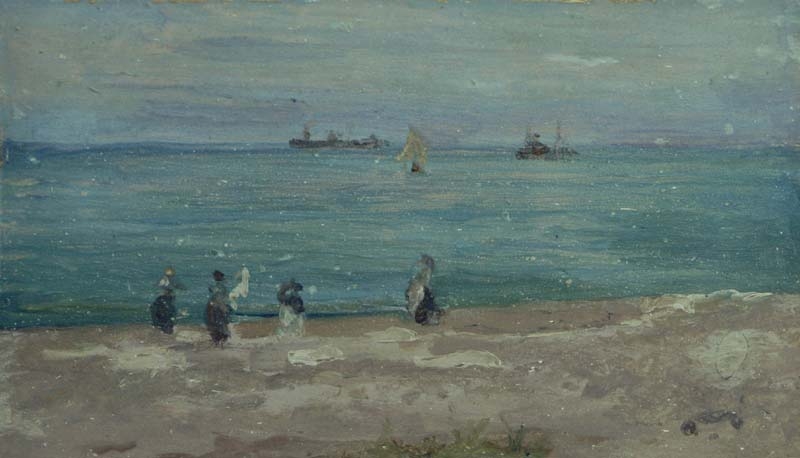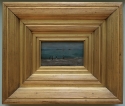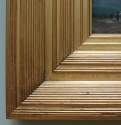Technique
It is painted on a very small, thin (92 mm thick) panel of soft wood, identified as a single piece of pine, with 2-3 mm bevelled edges on the verso. 1 It was primed with a thin layer of light grey, and the scene was then painted thinly, with the same blue paint (probably Prussian blue) used in the sea and sky, and the grey undercoat showing, according to Dr Joyce H. Townsend, 'through the thin horizontal brushstrokes in the manner of a nocturne.' 2
The figures and ships were painted rather tentatively, with tiny, expressive brushstrokes. The beach was painted more roughly, possibly rather quickly, the paint appearing matte. The artist appears to have taken most care with the subtly varied shades of sea and sky, painted in long, fluid strokes. The butterfly signature is unusually large in proportion to the panel, and is in a glossier paint: it was probably added later.
Conservation History
There is probably some lead soap aggregate formation, giving a slightly pimply texture, particularly in the paint of the sea.
There is some damage to the edges, resulting in paint loss, the picture having been framed while still not entirely dry. There is very fine craquelure along the horizontal wood grain. It has a thin yellowed varnish. Although the panel is thin and fragile it and the painting are in good condition. 3
Frame
Grau Whistler, signed 'F H Grau - London', 33.0 x 38.9 x 5.4 cm. 4
Last updated: 22nd October 2020 by Margaret








